 Movies and TV
Movies and TV  Movies and TV
Movies and TV  Health
Health 10 Miraculous Advances Toward Curing Incurable Diseases
 Miscellaneous
Miscellaneous 10 Undeniable Signs That People’s Views of Mushrooms Are Changing
 Animals
Animals 10 Strange Attempts to Smuggle Animals
 Travel
Travel 10 Natural Rock Formations That Will Make You Do a Double Take
 Movies and TV
Movies and TV 10 Actors Hidden in Your Favorite Movies
 Our World
Our World 10 Science Facts That Will Change How You Look at the World
 Pop Culture
Pop Culture 10 Incredible Female Comic Book Artists
 Crime
Crime 10 Terrifying Serial Killers from Centuries Ago
 Technology
Technology 10 Hilariously Over-Engineered Solutions to Simple Problems
 Movies and TV
Movies and TV 10 Movie Adaptions That Brought Popular Songs to Life
 Health
Health 10 Miraculous Advances Toward Curing Incurable Diseases
 Miscellaneous
Miscellaneous 10 Undeniable Signs That People’s Views of Mushrooms Are Changing
Who's Behind Listverse?

Jamie Frater
Head Editor
Jamie founded Listverse due to an insatiable desire to share fascinating, obscure, and bizarre facts. He has been a guest speaker on numerous national radio and television stations and is a five time published author.
More About Us Animals
Animals 10 Strange Attempts to Smuggle Animals
 Travel
Travel 10 Natural Rock Formations That Will Make You Do a Double Take
 Movies and TV
Movies and TV 10 Actors Hidden in Your Favorite Movies
 Our World
Our World 10 Science Facts That Will Change How You Look at the World
 Pop Culture
Pop Culture 10 Incredible Female Comic Book Artists
 Crime
Crime 10 Terrifying Serial Killers from Centuries Ago
 Technology
Technology 10 Hilariously Over-Engineered Solutions to Simple Problems
10 Experiments That Have Created Real Human-Animal Hybrids
In laboratories around the world right now, scientists are at work developing real half-human, half-animal hybrids.
SEE ALSO: 10 Bizarre Claims Of Alien/Human Hybrids
It might sound like something out of science fiction, but combining human and animal DNA isn’t the fantasy of some far-flung future. It’s something that scientists have already done several times—and it’s forcing us to reckon with ethical questions we never thought we’d have to consider.
According to the scientists, the part-human animals they’ve created will do nothing but good. They’re a scientific breakthrough that’ll let us run medical experiments and procedures on something they consider less than human.
But we’ve yet to decide where the line between man and animal will be drawn. It’s still an open question: Are these creatures mutated animals—or the beginning of something more human?
10 The Rabbit-Man Grown In A Dish
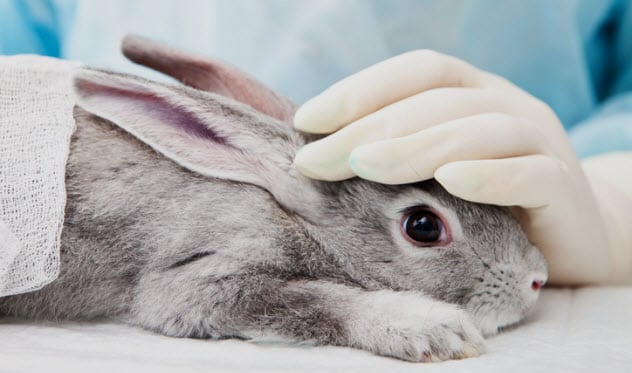
The first successful human-animal hybrid was developed in a laboratory dish in Shanghai in 2003. A team of scientists fused human cells in rabbit eggs, creating the embryos of a new creature that was half-rabbit and half-human.
They certainly weren’t the first people to try it. Scientists in the United States had been racing against them, attempting to make animal-human hybrids of their own. But none survived. The Shanghai team was the first to pull it off.
It was unique when compared to other experiments, too, because the vast majority of the DNA in the creatures growing inside their rabbit eggs was human. Just a small amount of DNA was taken from rabbits, meaning that whatever came out would have been more man than animal.[1]
The world never got to see what they made, though. They only allowed the creature to develop for a few days. Then they destroyed it and harvested it for its stem cells.
9 The Human-Chimpanzee Hybrid
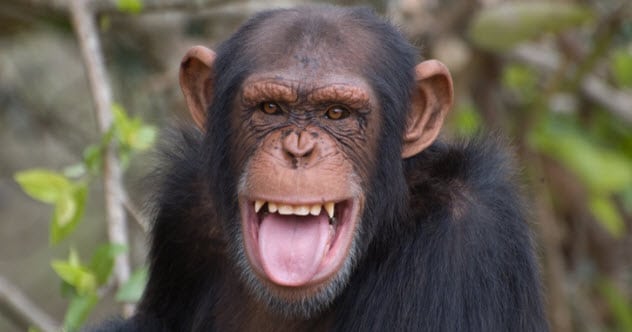
If two Chinese scientists are to be believed, China nearly made the first hybrid decades earlier. In 1967, they came close to creating a human-chimpanzee hybrid—and if the experiment hadn’t been shut down early, they would have succeeded.
Two scientists from Shenyang have claimed that they participated in an experiment in which they successfully impregnated a female chimpanzee with human sperm. Their goal was to create a new, more highly evolved chimpanzee with a larger brain and a wider mouth. Ultimately, they hoped that their new creature would be able to speak.
The humanzee wasn’t exactly going to be treated well. Their plan was to use it as a slave by making it drive carts and herd sheep. They also wanted to send it off on experiments in space.[2]
The project fell apart because of the Cultural Revolution. Zealous revolutionaries smashed their lab and destroyed their work, and the chimpanzee died before she could come to term. The researchers claim that she was already three months pregnant.
In 1981, the scientists said that they planned to try again. Nothing ever came of it, though, likely because of the growing concern about human ethics.
8 Pigs With Half-Human Blood

The Mayo Clinic in Minnesota injected human stem cells into pig fetuses and successfully created the first pig with half-human blood flowing through its veins.
The purpose of their experiment was to see how human and pig cells would interact when they were fused together. They discovered that some of the cells stayed separate, and their new hybrid creature had purely human and purely pig-sourced cells in different parts of its body. But others fused together to make DNA that had never been seen before.[3]
The result was an animal that looked like a normal pig on the outside. But on the inside, it had half-human, half-pig cells throughout its body. In particular, the animal had a type of blood that the world had never seen before, created out of the fusion of human and pig DNA.
7 Goats And Cows That Lactate Human Milk
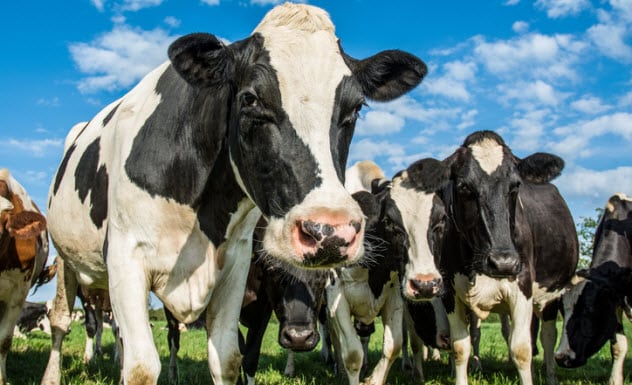
In 2009, Russian and Belarusian scientists genetically modified goats to produce human breast milk.
They weren’t able to make the milk 100 percent human. But they were able to fill it with human cells, creating milk that had 60 percent of the lysozyme and lactoferrin that characterize human milk. And they weren’t the only people who did. Shortly after, a Chinese team made a whole herd of 300 cattle that produced human milk.
The goal was to get human breast milk on grocery store shelves. The scientists wanted a way to harvest human breast milk on an assembly line, sure that people would flock to the stores for the chance to buy a bottle for their family. The Russian team even advertised that its human milk made delicious cheese.
The Chinese team originally planned to have their product in stores by 2014, but a lukewarm reception pushed back their plan. Right now, they’re working on convincing the world that human milk excreted from a mutant cow is something worth buying. But once they do, you’ll be able to pick it up at a store near you.[4]
6 Pigs And Sheep With Human Organs
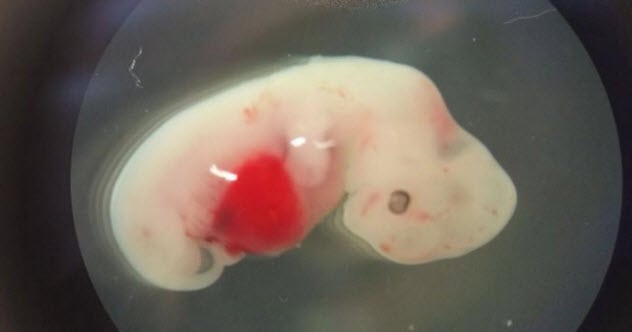
One of the biggest goals in making human-animal hybrids is to create a farm of animals that can be harvested for human hearts and lungs.
In the US, this a major field of science right now, though it’s still a little controversial around the world. Hiromitsu Nakauchi, one of the leading scientists working on the project, had to leave his home country of Japan for America because his work is illegal in his homeland. But in America, his work is encouraged. The US Army gave him a $1.4 million grant.
In 2017, they created 186 embryos for a pig-human hybrid, and right now, they’re working on a sheep-human hybrid. Every creature they make is only allowed to develop for 28 days. Then it’s destroyed.[5]
Their most human creature yet was still mostly an animal. It had only 0.01 percent human DNA. Nakauchi had admitted that this isn’t enough to make a creature with human organs. Still, it’s progress, and Nakauchi insists that they’re getting closer every day.
5 Mice With Human Livers
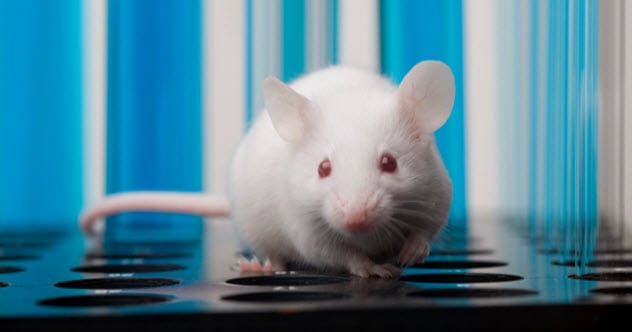
In 2010, researchers at the Salk Institute created a mouse with an almost entirely human liver. Then they injected the animal with every disease they could.
The goal of the project was to run experiments on diseases like malaria and hepatitis B and C that can only affect humans and chimpanzees. In the past, researchers had only been able to do animal testing for these diseases on chimpanzees. They hoped they could avoid a few complaints from ethics boards if they could do the experiments on mice.
It’s up for debate as to which approach is more humane. After creating the mutant mice, the researchers deliberately infected them with hepatitis B and C. Then the researchers tried to treat the illnesses they’d injected into the animals’ bodies.[6]
Scientists believe that this could lead to new breakthroughs in medicine. However, whether people accept their approach more warmly than testing on chimpanzees remains to be seen.
4 Mice With Human Anal Sphincters
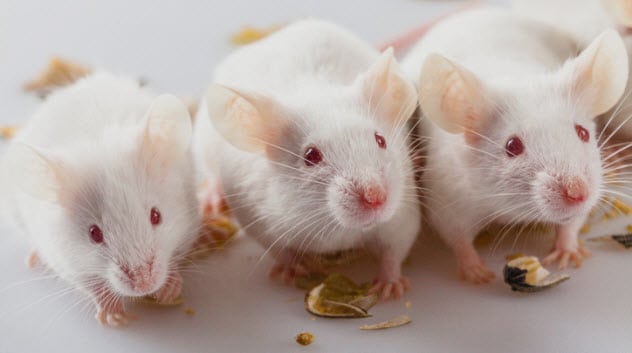
In what has to be the strangest-sounding experiment into human-animal hybrids, scientists in 2011 grafted human anal sphincters onto mice.
The scientists bioengineered the anal sphincters, making them complete with human nerves and muscles. The researchers were delighted to see that the sphincters would generate their blood supply and fuse with the rest of the flesh when grafted onto animals’ bodies. The mice could even relax and contract them like natural sphincters.[7]
The purpose was to do some early testing for a procedure that’s really meant for human beings. Scientists are hoping to make replacement anal sphincters for humans, personalized by using the patient’s own skin and nerve cells. Which sounds a little disgusting, but it just might save lives.
3 The Mouse With An Ear On Its Back
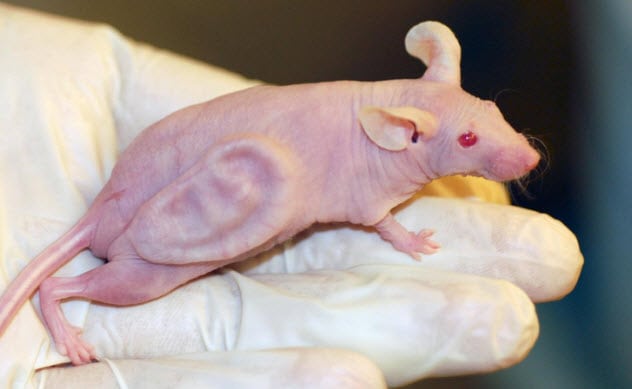
The best-known human-animal hybrid technically wasn’t a human-animal hybrid at all. If the experiment had gone through to the end, though, it would have been.
A mouse with a human ear on its back was bioengineered by a team of Harvard and MIT scientists in 1997. The scientists put a scaffolding in the shape of a human ear inside the mouse. It was made of biodegradable materials. So the scaffolding was slowly absorbed into the mouse’s body, making an actual, biological ear of cartilage and flesh that theoretically could have been surgically removed and grafted onto a human being.
That was the plan, too. The scientists had started the project as a way to help plastic surgeons, who have a hard time reconstructing human ears. They wanted to create the ear on a mouse and then graft it onto a person, giving a human being an ear made of animal cartilage and flesh.[8]
In the end, though, the project ran out of funding before the researchers could progress to human trials. The project leader insists that he could still pull it off if he could just secure “roughly another million dollars in funding.”
2 Mice With Half-Human Brains
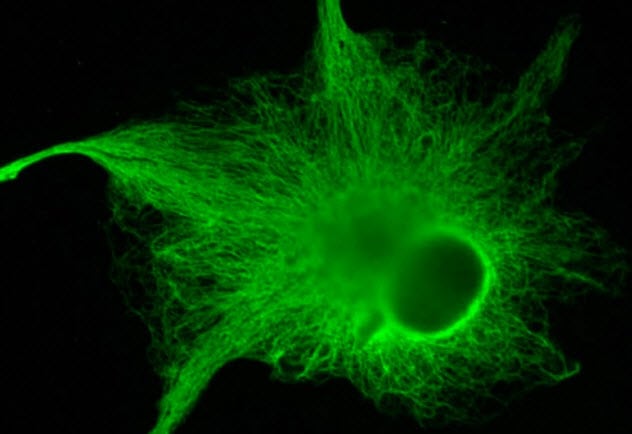
It’s one thing to give a pig a human lung, but one experiment blurred the line between human and animal in a way that no other has. In 2014, a team of researchers gave mice millions of human brain cells.
The researchers replaced almost every cell in the mouse brains with human cells, leaving only the original mouse neurons intact. Once inside, the human cells almost completely took over the mouse brains. Within a year, their glial cells had been completely replaced by human brain cells. Each mouse had about 12 million human cells at work inside their strange hybrid brains.
Scientists ran horrible tests on the mice. In their main experiment, the researchers played a noise before attacking the mice with an electric shock. Then scientists measured how the mice reacted the next time that they heard the threatening sound. It was fairly twisted. But it showed the researchers that the memories of these modified mice were four times stronger than those of a normal mouse.[9]
1 Monkeys With Human Neural Cells

The men who put human brain cells into mice justified their work by saying that they hadn’t used monkeys. There were “ethical issues,” they admitted, in making an animal so closely related to humans any bit more like man. They weren’t willing to cross that line.
Yale University was up to it, though.
In 2007, Yale put human neural stem cells into five monkeys to see how it would affect Parkinson’s disease. Medically, the results were very positive.
The monkeys, all of which suffered from the disease, could walk, eat, and move better than before. They had significantly fewer problems with tremors, and it all came with no tumors or toxic side effects whatsoever.
From a philosophical point of view, though, the experiment brought up some uneasy questions. The human neural cells survived and migrated in the monkey brains, changing the way their brains functioned.[10]
In this project, they used a small enough number of cells that it didn’t affect their behavior in a major way. But it brings us closer to an inevitable question: How many human neural cells have to be fused with a monkey’s brain before it becomes something more?
Read more bizarre stories about hybrids on 10 Bizarre Claims Of Alien/Human Hybrids and 10 Hard-Core Hybrids Formed By Sex Among Three Species.








